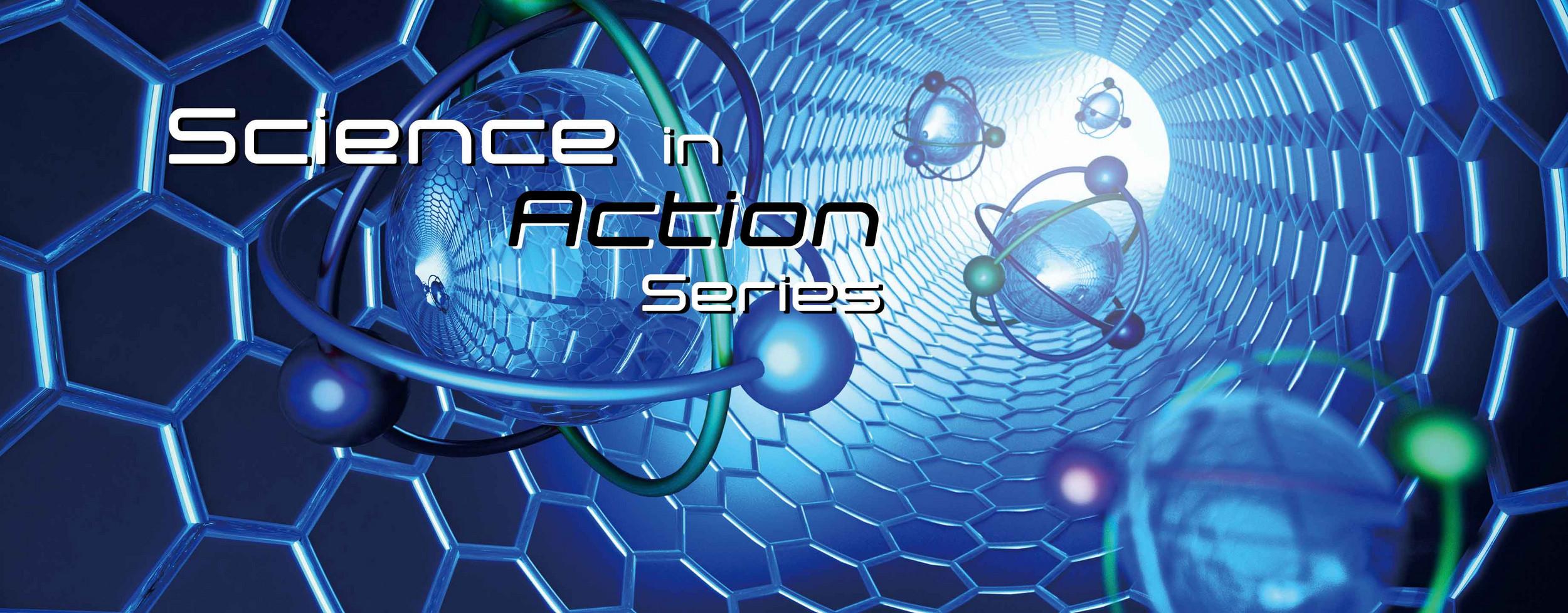
Eric Ellison, University of Colorado, Boulder
Visualize slicing a rock so thin it’s transparent to the eye. That’s what Eric Ellison must do to study which minerals host life.
Ellison is the Raman lab manager and applications developer for the University of Colorado – Boulder’s CU Raman Microspectroscopy lab. He uses Raman spectroscopy to analyze rock samples taken from deep beneath the earth for signs of microscopic life.
His lab seeks answers to many diverse questions. All geological systems contain minerals and they aren’t hidden. But the minerals, all assembled together, can be complex, so Raman is needed to spatially resolve all of the different minerals present and their relationships to each other.
The minerals are the keys to finding life. Raman spectroscopy also will tell researchers the chemical composition and spatial relationships of minerals.
“It can tell us about chemical reactions in rocks,” Ellison said. “We are looking for minerals that have formed in the past that recorded information about the environment the rock has been in and whether these rocks could support a microbial ecosystem. We want to know whether these sorts of ecosystems exist, how prevalent they may be, and how much energy is there for life, because we think these same sorts of rocks-hosted environments may exist on other planets.”
The rocks he studies are peridotites, found in the Earth’s mantle. These rocks are far out of equilibrium with earth’s surface, water and low temperatures. These are rocks that formed deep down in the Earth under high temperatures and pressure without oxygen.
When these rocks get moved tectonically up to the surface of the Earth, the rocks want to react with the environment in a process called serpentinization.
“The chemical reactions I’m studying are like rusting,” Ellison said. “They are iron rich rocks. The chemical reactions with water lead to the iron becoming oxidized, the water being broken down and hydrogen being released.”
That hydrogen gas is an energy source for single-cell microorganisms like bacteria and archaea, that can live in the rocks. These organisms can combine the hydrogen with the carbon dioxide and live off gasses.
Raman spectroscopy plays a key role in identifying these chemical structures.
“We use the Raman for mapping these minerals in the rocks,” he said. “We cut it and make a thin microscopic transparent slide. We identify the minerals on a microscopic scale, looking for evidence that the chemical reaction has occurred. That is, we look to see if the minerals consumed were present, and the chemicals produced are present.”
It all goes towards answering two questions – whether the energy was made and whether life used it.
Raman is a powerful technology because it’s sensitive to crystal structures. The lab uses a LabRAM HR Evolution Raman Spectrometer and Confocal Raman Microscope.
“It can show us the actual mineral structures that are present,” Ellison said. “That matters because it can tell us about the temperature and whether these reactions happened.
Brucite is a mineral he works with frequently.
“It would be very hard for me to know if that’s there without Raman,” he said. “Raman just lights it up. We can find hidden rare and fine scale minerals with it.”
��������ֱ�� LabRAM HR Evolution in the CU Raman Microspectroscopy lab at the University of Colorado Boulder
Raman microspectroscopy is an integral component of deciphering how rocks that have recovered from the deep subsurface may have created habitats for microbial life.
The lab’s Raman spectrometer is a valuable instrument to the community. Ellison encourages campus and outside users to regularly access this facility.
“There have been engineering and materials type industries, people making precision optical materials, and thin coatings for household items. We even had engineers with a printer company. They had a material with a thin coating and they were trying to characterize it,” he said. Other users have used the lab to study materials in concrete, liquid crystals, advanced plastics, batteries, and many other products.
Ellison works in concert with university Geomicrobiologist Alexis Templeton, Ph.D., a professor of geological sciences at the university. Currently, Templeton is leading a nine-institution project called “Rock Powered Life,” which looks at revealing mechanisms of energy flow from the lithosphere (the Earth’s crust and mantle) to the biosphere. The project is supported by the NASA Astrobiology Institute and looks to further concepts of where life may be able to exist on other planets.
Do you have any questions or requests? Use this form to contact our specialists.